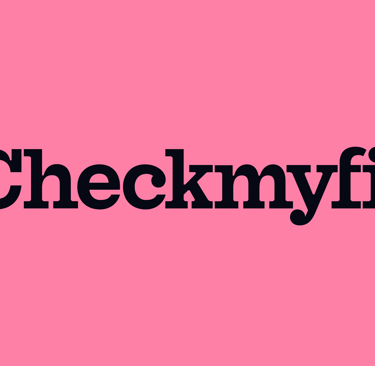Unlock Your Dream Home: A Credit Score Survival Guide
Buying a house is a significant step, and your credit profile doesn't have to be a roadblock. Understanding what mortgage lenders truly value can significantly boost your chances of approval. This comprehensive guide walks you through the essential steps to prepare for your home purchase.
Best Fit Mortgages LTD
9/24/20241 min read
Understanding Your Credit Score
Check Your Credit Score : The first step is to find out your current credit score (by clicking on the picture above). While the number itself isn't everything, it provides a starting point.
Credit History Matters: Mortgage lenders are interested in your credit history over the last six years. If you haven't missed any payments during this time, you're likely to qualify with most lenders.
Building a Strong Credit Profile
If you have limited credit history:
Register to Vote: Ensure you're on the electoral roll with your local council.
Consider a SIM Card Contract: This can help establish a payment history.
Use Credit Cards Wisely: While they can be beneficial, be aware that new credit cards may initially lower your score. Positive effects typically appear after six months of diligent, full balance payments.
Addressing Credit Issues
Minor Issues: If you have a few missed payments older than 2-3 years on your credit file, some high street lenders may still offer mortgages with a 5% deposit.
Significant Issues: For defaults and CCJs totaling over £1,000, you may need a specialist mortgage lender and a 10-15% deposit. In this case, working with a mortgage broker is advisable.
Strengthening Your Application
Employment History: Aim for 12 months of continuous employment, even though some lenders accept less.
Documentation: Ensure you have:
Valid passport and driving license
Recent payslips and tax documents
Bank statements showing:
Regular salary deposits
Build-up of savings for your deposit
Additional proof of deposit savings (if applicable)
Debt-to-Income Ratio: Keep this below 40%, preferably under 20%. For example, with a £50,000 annual salary, aim for less than £20,000 in debt (ideally under £10,000).
BEST FIT MORTGAGES LTD
T: 01744411604
E: contact@bestfitmortgages.co.uk
Your property may be repossessed if you do not keep up repayments on your mortgage or loans secured on it.
Best Fit Mortgages LTD Registered office address: 60 Chiltern Road, St. Helens, England, WA9 2HT. Registered in England and Wales No: 15722235
Making a complaint: It is our intention to provide you with a high level of customer service at all times. If there is an occasion when we do not meet these standards and you wish to register a complaint, please write to: Compliance Department; Connect IFA Ltd, 39 Station Lane, Hornchurch, RM12 6JL or call: 01708 676110. If you cannot settle your complaint with us, you may be entitled to refer it to the Financial Ombudsman Service www.financial-ombudsman.org.uk
Best Fit Mortgages LTD is an Appointed Representative of Connect IFA Limited 441505 which is Authorised and Regulated by the Financial Conduct Authority and is entered on the Financial Services Register under reference 1017669. The FCA do not regulate some forms of Business Buy to Let Mortgages and Commercial Mortgages to Limited Companies. A fee will be payable for arranging your mortgage. Your consultant will confirm the amount before you choose to proceed, but this is typically 0.5% of the mortgage balance, e.g. £500 for a mortgage of £100000. The guidance and/or advice contained within this website is subject to the UK regulatory regime and is therefore primarily targeted at consumers based in the UK.
© 2024. All rights reserved.
Commission disclosure: We are a credit broker and not a lender. We have access to an extensive range of lenders. Once we have assessed your needs, we will recommend a lender(s) that provides suitable products to meet your personal circumstances and requirements, though you are not obliged to take our advice or recommendation. Whichever lender we introduce you to, we will typically receive commission from them after completion of the transaction. The amount of commission we receive will normally be a fixed percentage of the amount you borrow from the lender. Commission paid to us may vary in amount depending on the lender and product. The lenders we work with pay commission at different rates. However, the amount of commission that we receive from a lender does not have an effect on the amount that you pay to that lender under your credit agreement.
Not all services we offer are covered by the FCA.




